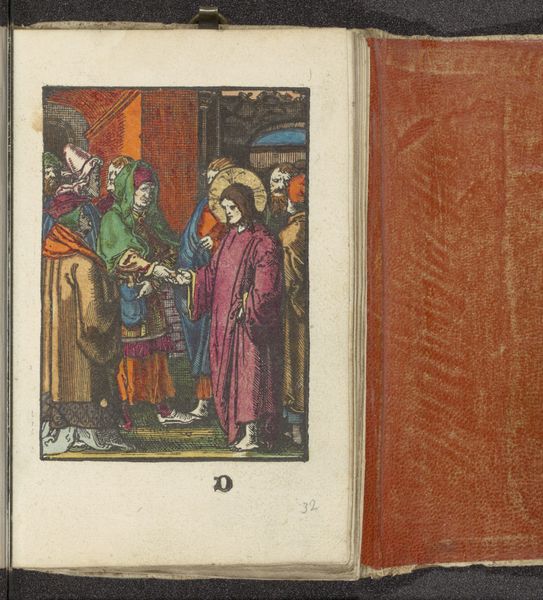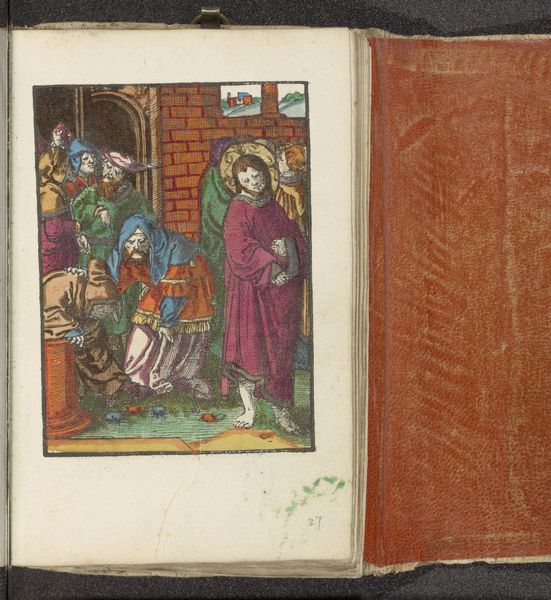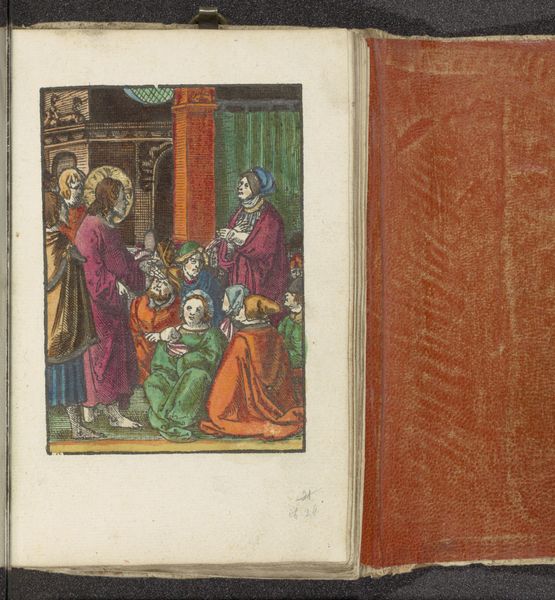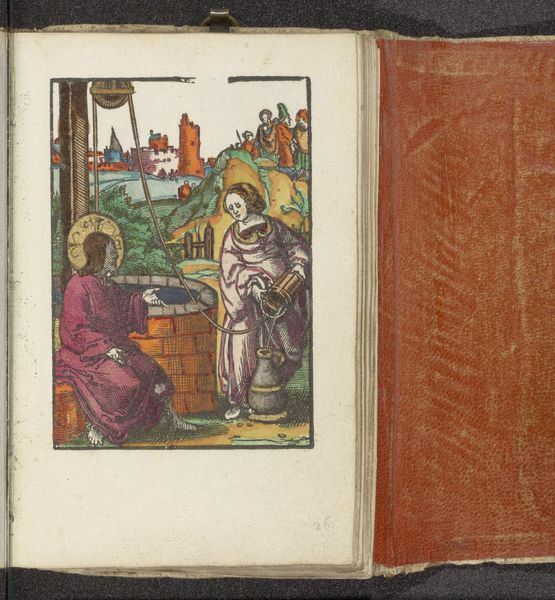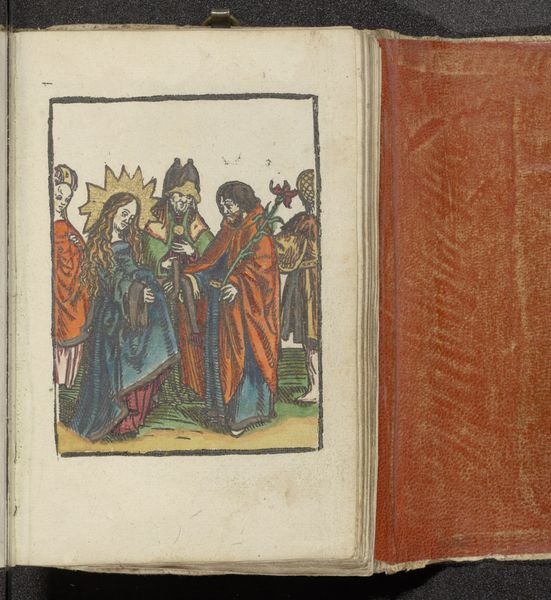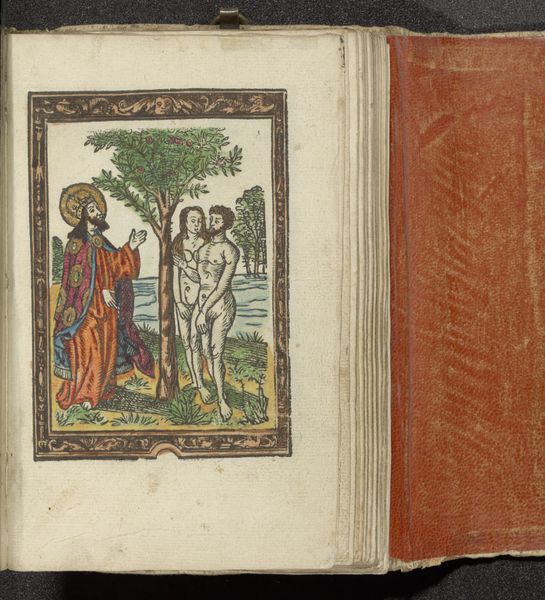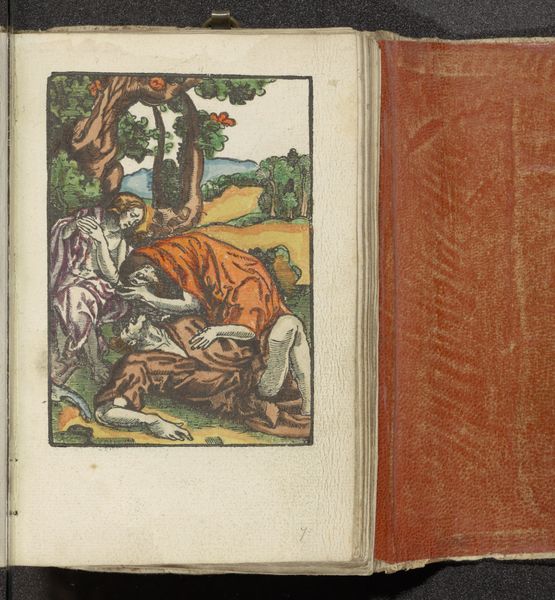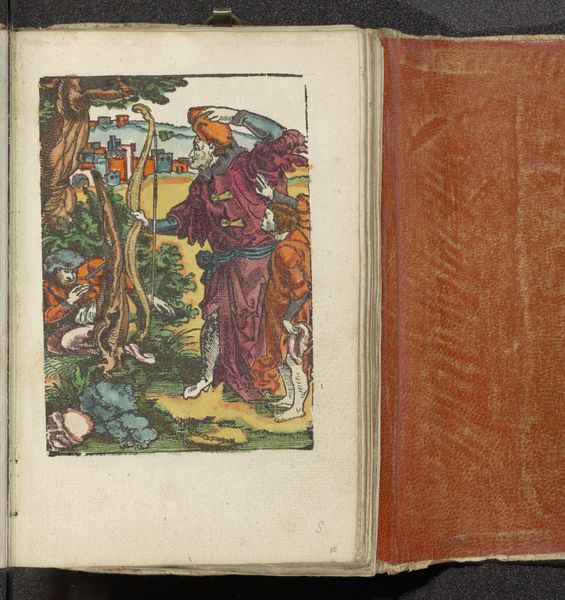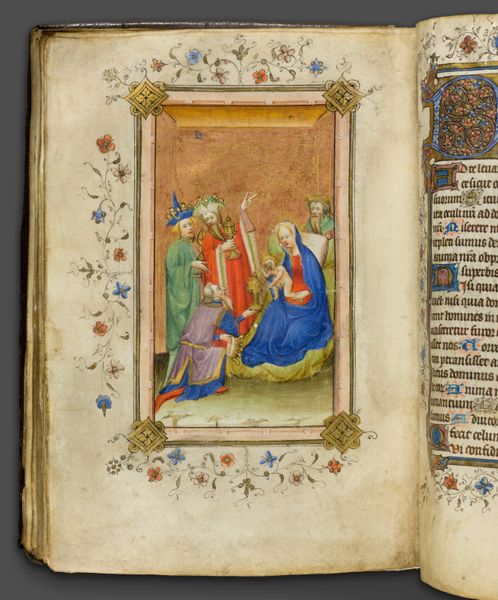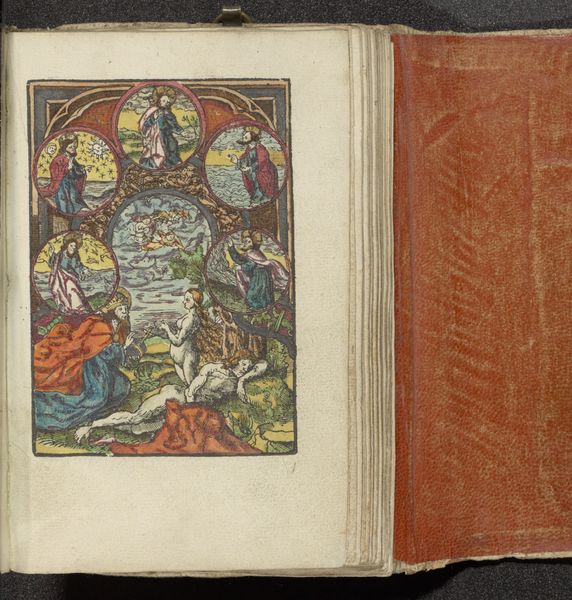
drawing, coloured-pencil, paper, ink
#
drawing
#
coloured-pencil
#
narrative-art
#
figuration
#
paper
#
ink
#
coloured pencil
#
italian-renaissance
Dimensions: height 111 mm, width 80 mm, height 159 mm, width 101 mm
Copyright: Rijks Museum: Open Domain
Curator: This drawing, "Christ and the Woman Taken in Adultery," created around 1530 by Lucas van Leyden, captures a powerful biblical scene in ink and colored pencil on paper. Editor: Immediately, the dense composition strikes me. The crowd presses in, their faces etched with judgment, a stark contrast to the kneeling figure of Christ. There's an emotional weight in the crowded figures versus his solitary kneeling posture. Curator: Absolutely. Van Leyden places us right in the thick of the hypocrisy. We see the male figures on the left in the background with their backs facing the scene and we almost feel that they do not believe Christ will punish the woman in anyway. Look at how Christ’s figure is off center with a pale garment, drawing our attention to his meek presence amidst the clamor, positioning him as the focus of moral questioning. How can they justify this injustice to a helpless woman in the presence of their savior? Editor: The colors are quite intriguing too. What meaning would the symbols found around Christ's kneeling location hold for the contemporary viewers? Curator: Yes, this biblical tale has resonated across centuries due to its critical exploration of gendered morality and social exclusion. The text that Christ appears to be writing at ground level is taken from the bible to show his wisdom by drawing the onlookers' gaze away from her presumed transgressions, and causing them to ponder over their own. Van Leyden cleverly directs the viewer's gaze toward broader questions of morality and authority. Editor: A crucial point. The imagery forces us to confront uncomfortable truths. It encourages, dare I say, even demands empathy and an open questioning of who benefits and suffers within dominant social systems. Curator: It does that by subtly underscoring a crucial social and historical dimension: who possesses the power to judge, and whose stories are erased in the process? What the viewer sees on this manuscript could become very uncomfortable given this story's reflection on societal inequities of the era. Editor: I leave this manuscript feeling a bit more aware, not just of a story from a certain era but also of the continuing dynamics that still echoes within and beyond the art itself. Curator: Exactly. "Christ and the Woman Taken in Adultery" remains relevant because it forces us to confront our own complicity in perpetuating those harmful power dynamics.
Comments
No comments
Be the first to comment and join the conversation on the ultimate creative platform.
